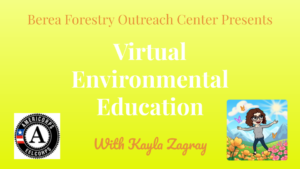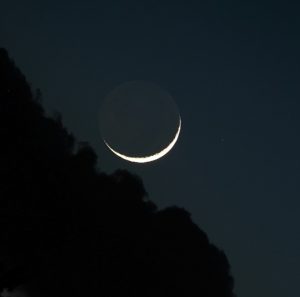Scroll down for new additions!
Nature in Your Neighborhood
Here is the latest video to accompany this lesson
Spooky Creatures
Click Here for our virtual place-based lesson!
Click Here to watch a short video on this topic!
Parts of a Tree
Click Here for our virtual place-based lesson!
Click Here to watch a short video on this topic!
Introduction to Trees
Click Here for our virtual place-based lesson!
Click Here to watch a short video on this topic!
Nature in Your Neighborhood
Click Here for our virtual place-based lesson!
Click Here to watch a short video on this topic!
Inquiry-Based Lessons
FOC Director and long-time educator, Wendy Warren, has written blog posts about inquiry-based learning. For all of her posts, click HERE.
Ants (Structure and Function)
Warm weather is finally here, and you know what that means? Bugs, insects, and all the critters! We’re sad that our usual springtime activities won’t be happening, but we don’t want anyone to miss out on what’s occurring in the ecosystems all around us! For this week’s Try This! Tuesday, join a step by step virtual environmental learning experience put together by our Certified Environmental Educator, Michelle. Using this link (https://app.peardeck.com/student/tvzosfgur), you can join an interactive lesson showing you how to do an environmental experience in your own yard at your own pace.
This week’s learning experience is about ants and how they work!
(Creator’s Note: This lesson will be available for anyone to use at any time, not just today April 7th, 2020, however, the link might become unavailable after some time. Please reach out to us if the link isn’t working. THANK YOU!)
Telling Time with the Stars
by Jeff Hutton
Did you know that hundreds of years ago there were no clocks? Just like now, there were people who were clever and they realized that the sun, moon and stars always rose in the east, traveled across the sky and set in the west. They also knew that certain stars were up at night only at certain times of the year and that the stars that were close to the sky’s north pole, near the star called Polaris, never set.
Read more and find the activity here: Telling Time with Stars PDF
Thanks to Jeff Hutton. Diagrams from Astronomical Society of thePacific’s “UAYF 2.0” https://astrosociety.org/

Hey, Check Out the Moon!
by Jeff Hutton
Did you notice how big the full moon was before clouds closed in on April 8? Maybe you heard someone call it the “Super Moon”. If you’d like to learn more about that, read this month’s “The Skies over the Pinnacles” or go to NASA’s website at www.NASA.gov and type in “Super Moon” in the Search Box. The moon always seems to be changing its shape doesn’t it? You might have also heard terms like “New Moon” or “First Quarter Moon”. Curious? Read on and find a fun activity here: April 11 Check out the Moon! PDF

April Showers–Lyrid Meteor Shower
by Jeff Hutton
I’ve never seen a meteor storm. I’m not talking about your 5 or 10 falling stars in an hour but an honest to goodness 4th of July spraying of sparks, kind of event. If you’re my age, think about the lines from John Denver’s Rocky Mountain High when he sings about seeing it “raining fire from the sky”. But I never tire of the thrill of seeing just one pea-sized speck from a comet or asteroid leaving a lasting trail of light across a starry sky.
This April’s Lyrid meteor shower doesn’t promise to be a storm but it does promise to give you and your family a chance to share in an adventure you’ll talk about for a long time.
Curious? Read on and find a fun activity here: April Showers

Seed to Sprout! Grow Your Own Plant
With spring in full bloom, you or your little one might be wondering, “Where do all of these flowers, trees, grasses, and bushes come from?” Well, they all start out as a seed! Plants are the base for our ecosystem. They provide habitat, food, and oxygen for us and all of our animal friends. Do you know what plants need to do all of those things?
This week’s learning experience is learning about how plants grow by planting and caring for your own seed! Only a few common household items are needed.
Get hands-on in this activity by clicking the link here: https://app.peardeck.com/student/teatyytdv
(Creator’s Note: This lesson will be available for anyone to use at any time, not just today April 21st, 2020, however, the link might become unavailable after some time. Please reach out to us if the link isn’t working. THANK YOU!)

Hey, Look at the Moon!
by Jeff Hutton
Look carefully at the moon. My mom used to call this a “fingernail Moon” because it looks like the thin edge of one of your fingernails. Here’s a picture I took of the Moon in 2017 that looks like it does this Sunday, April 26th, 2020.

Can you see any part of the Moon that isn’t shining so bright? If it’s very clear I bet you can! The darker part of the moon, away from the sun, is the part of the moon where it’s nighttime. But if you can see the night side of the moon it must be lit a little. It is! You’re seeing part of the Moon being lit up by sunlight that was reflected off the Earth.
If we’re lucky, you’ll be able to see the moon for most of the next two weeks. In two weeks, May 7, the moon will be full.
Check out Jeff’s full activity to track the phases of the moon by clicking HERE.
Access a PDF version of the Lunar Record Observation Chart mentioned in the activity by clicking HERE.
Share with us on Facebook what you learn!
